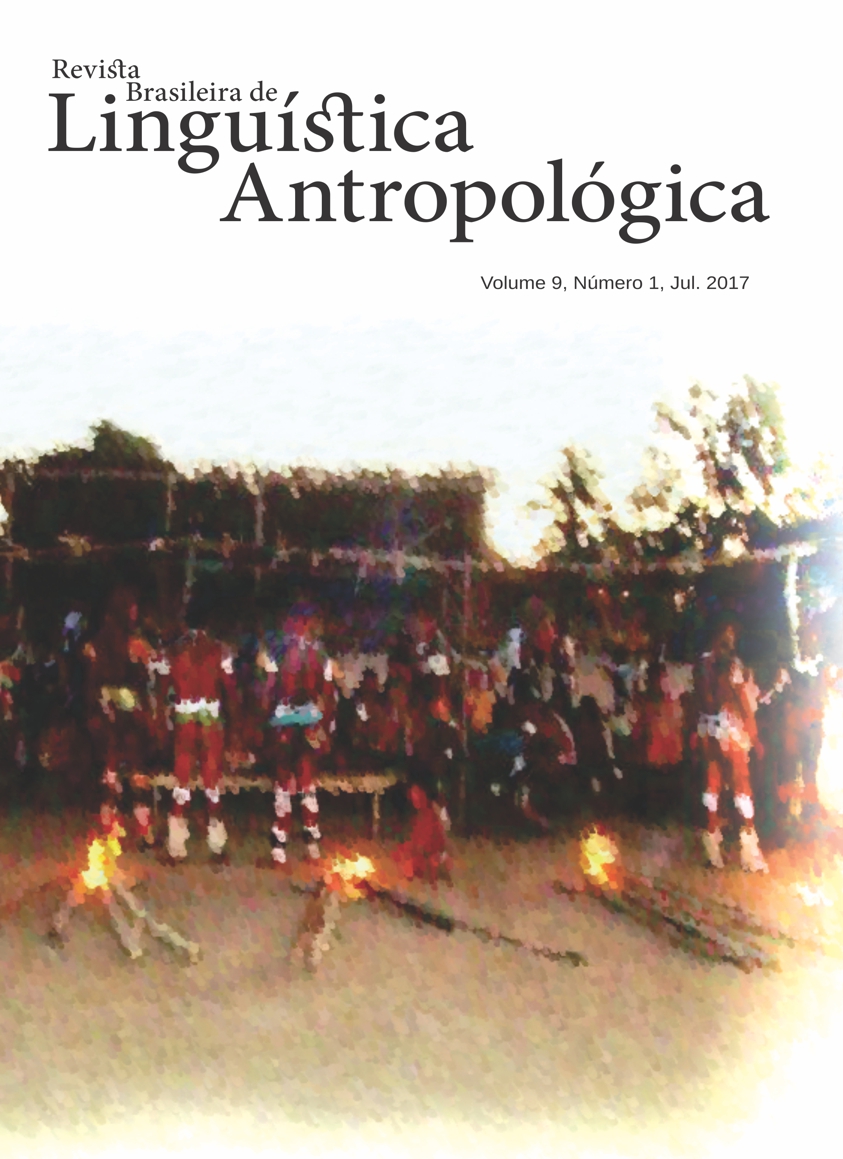A originalidade das línguas indígenas brasileiras
DOI:
https://doi.org/10.26512/rbla.v9i1.19521Abstract
Conferência proferida por ocasião da inauguração do Laboratório de Línguas Indígenas do Instituto de Letras da Universidade de Brasília, em 8 de julho de 1999.
References
Cavalcante, M. P., 1987. Fonologia e morfologia da língua Kaingáng: o dialeto de São Paulo comparado com o do Paraná. Tese de doutorado, UNICAMP, Campinas. Derbyshire, D. C., 1977. «Word order universals and the existence of OVS languages». Language Inquiry 8:590-599.
Dourado, L. G., 1994. «Incorporação de posposição na língua Panará».
Comunicação apresentada no Congresso Internacional da Associação Brasileira de Lingüística, Salvador. Everett, D., 1979. Aspectos da fonologia do Pirahã. Dissertação de mestrado, UNICAMP, Campinas.
_____, 1982. «Phonetic rarities in Pirahã». Journal of the International Phonetics Association 12:94-96.
_____, 1986. «Pirahã». Handbook of Amazonian Languages, vol. 1:200-325 (org. por D. C. Derbyshire e G. K. Pullum), Mouton de Gruyter, Berlim.
Gudschinsky, S. C., H. & F. Popovich, 1970. «Native reaction and phonetic similarity in Maxakalí». Language 46:77-88.
Landin, D. J., 1984. «An outline of the syntactic structure of Karitiâna sentences». Série Lingüística 11: Estudos sobre línguas Tupi do Brasil (org. por R. A. Dooley) 219-254. Brasília: Summer Institute of Linguistics.
Meer, T. van der, 1982. Fonologia da língua Suruí. Dissertação de mestrado, UNICAMP, Campinas.
Pereira, D. G., 1991. Alguns aspectos gramaticais da língua Maxakalí. Dissertação de mestrado, UFMG.
Rodrigues, A. D., 1984. «Contribuições das línguas brasileiras para a fonética e a fonologia». Language in the Americas (org. por D. F. Solá) 263-267. Ithaca: Cornell University.
_____, 1993a. «Línguas indígenas: 500 anos de descobertas e perdas». D.E.L.T.A. 9(1):83-103. São Paulo.
_____, 1993b. «Línguas indígenas: 500 anos de descobertas e perdas». Ciência Hoje95:20-26. Rio de Janeiro.
_____, 1993c. «Endangered languages in Brazil». Trabalho apresentado no Symposium on Endangered Languages in South America, Rijks Universiteit Leiden.
_____ & M. P. Cavalcante, 1982. «Assimilação intrassegmental em Kaingáng». Ciência e Cultura 34(7), Suplem., 198. São Paulo.
Sandalo, M. F. S., 1991. Aspectos da língua Pirahã e a noção de polifonia. Dissertação de Mestrado, UNICAMP.
Silva, A. C. S., 1999. Aspectos da referência alternada em Parakanã. Dissertação de mestrado, UFPA. Souza, I. de, 1988. Contribuição para a fonologia da língua Arára (Karíb). Dissertação de mestrado, UNICAMP.
Vigna, D. del, 1991.Segmentos complexos da língua Yuhúp. Dissertação de mestrado, UnB.
Weir, E. M., 1990. «Incorporation in Nadeb». Amazonian Linguistics: Studies in Lowland South American Languages (org. por D. L. Payne) 321-363. Austin: University of Texas Press.
Wetzels, L., & W.Sluyters, 1995. «Formação de raiz, formação de glide e ‘decrowding’ fonético em Maxacalí». Estudos fonológicos das línguas indígenas brasileiras (org. por L. Wetzels), pp. 103-149. Rio de Janeiro: Editora UFRJ.
Downloads
Published
Issue
Section
License
Copyright (c) 2018 Revista Brasileira de Linguística Antropológica

This work is licensed under a Creative Commons Attribution 4.0 International License.
Authors who publish in RBLA agree to the following terms:
a) Authors maintain the copyright and grant the journal the right of first publication, and the work is simultaneously licensed under the Creative Commons Attribution License, which allows the sharing of the work with recognition of the authorship of the work and initial publication in this journal.
b) Authors are authorized to assume additional contracts separately, for non-exclusive distribution of the version of the work published in this journal (eg, publish in an institutional repository or as a book chapter), with recognition of authorship and initial publication in this journal.
c) Authors are allowed and encouraged to publish their work online (eg, in institutional repositories or on their personal page) at any point before or during the editorial process, as this can generate productive changes, as well as increase impact and citation of the published work.










